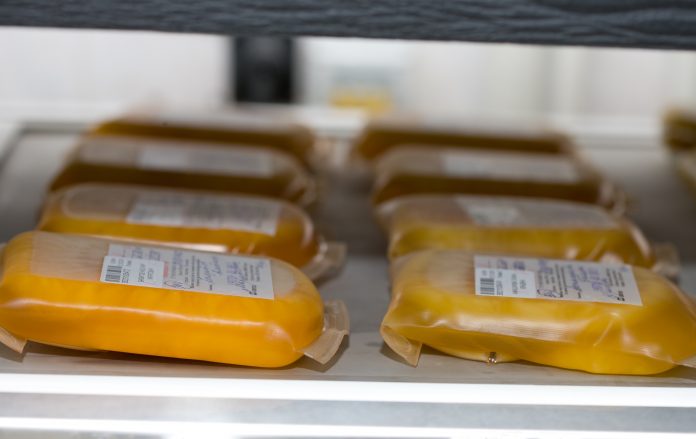New data suggests that before 60 days of COVID symptoms beginning is the best window for convalescent plasma donation – which is how antibodies were created in countless COVID-19 patients before vaccines
“Millions of individuals worldwide have recovered from COVID-19 and may be eligible for participation in convalescent plasma donor programs,” said Professor Vivek Kapur, microbiology and infectious diseases at Penn State.
“Our findings enable identification of the most promising donors and suggest that these people should donate quickly before their antibodies begin to wane.”
“people should donate quickly before their antibodies begin to wane.”
A team of researchers at Penn State found that the best window for convalescent plasma donation was 60 days after first COVID symptoms. The best kind of donor is a patient older than 30 whose illness had been severe.
In the UK, scientists previously suggested that the antibody window is much smaller.
Why does plasma help to treat COVID?
Plasma is the light yellow substance that makes up roughly 55% of your blood. It is mostly water, but it carries the antibodies that your body makes in response to any virus. The antibodies remain in your plasma for an unknown but crucial amount of time. Vaccine testing is heavily reliant on how the survivors have survived, working backward from that desired outcome.
Convalescent plasma is the attempt to transfer those biologically-equipped fighters from a successful war to a struggling battlefield, via blood transfusion.
It was given Emergency Use Authorisation in the US, in August 2020.
At the University of Pittsburgh, a team looked at how llama antibodies could one day be an inhalable vaccine for COVID-19.
Over 100,000 US COVID patients received plasma treatment
“Our finding that a strong immune response persists through 140 days after symptom onset in most COVID patients was unexpected and is contrary to the claims of short-lived immunity and potential re-infection of some COVID patients,” said Suresh Kuchipudi, clinical professor of veterinary and biomedical sciences, Penn State.
“This is particularly important when you consider that, to date, more than 100,000 COVID-19-infected individuals in the United States have received convalescent plasma donations from recovered patients.
“Taken together, our findings suggest that care should be taken in identifying which recovered patients qualify to be donors and that, if they choose to donate, these donors should do so quickly.”











